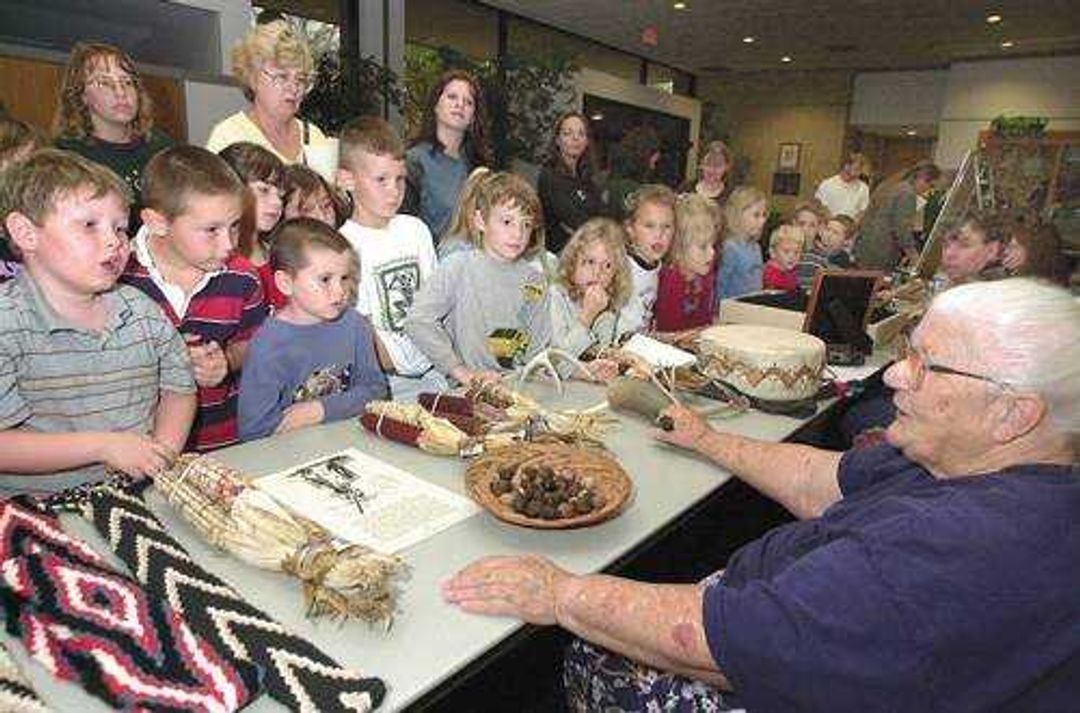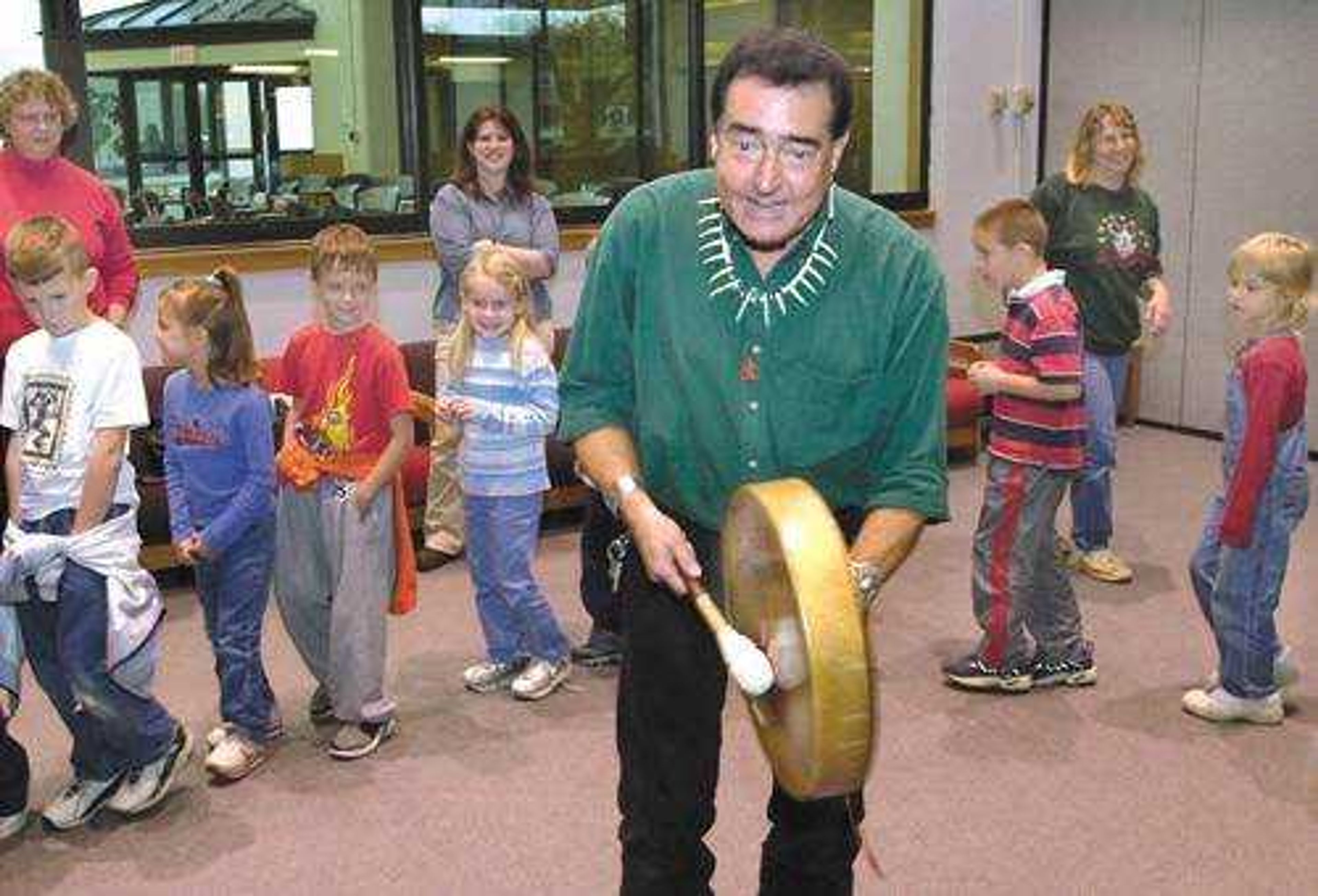The ways of a tribe
"Windigo." The word is nearly whispered, but carries enough emphasis to widen the eyes and drop the jaws of the 6- and 7-year-olds in Chief Paul White Eagle's audience. The children, a group of first-graders from North Elementary in Fruitland, are spellbound by the rolling lilt of White Eagle's voice and his tale of the forest-dwelling, child-devouring creature known in American Indian folklore as Windigo...
"Windigo."
The word is nearly whispered, but carries enough emphasis to widen the eyes and drop the jaws of the 6- and 7-year-olds in Chief Paul White Eagle's audience.
The children, a group of first-graders from North Elementary in Fruitland, are spellbound by the rolling lilt of White Eagle's voice and his tale of the forest-dwelling, child-devouring creature known in American Indian folklore as Windigo.
As he speaks, White Eagle leans forward as if confiding a special secret to the children. And in a way, he is doing just that.
White Eagle's stories and the history of his tribe -- the AhNiYvWiYa -- are not found in any of these students' history books.

On Wednesday, AhNiYvWiYa members demonstrated crafts and displayed artifacts at the University Center at Southeast Missouri State University in honor of Native American Month.
White Eagle and other local members of the AhNiYvWiYa tribe spend much of their time sharing their culture with others in an attempt to eradicate the stigmas associated with their heritage.
"There is a Native American pride in Cape Girardeau, but I don't know if people recognize it," said Red Hawk, an AhNiYvWiYa tribesman and flute maker who lives in Sikeston, Mo.
The prejudice that once ostracized American Indians is diminishing, and the result has been a resurgence of pride in that heritage. Red Hawk and other AhNiYvWiYa say American Inidans now feel they be can be more open about their ancestry.
"I won't say there isn't prejudice now, but there came a time when the truth had to come out," Red Hawk said. "We recognize that there is a stigma, and we want people to know we're like everyone else."
Wednesday's visit with the AhNiYvWiYa was a memorable one for the North Elementary students.
First-grade teacher Kathy McMillan said her students talked about the trip for the rest of the day.
"They learned about how difficult it was to survive back at that time," McMillan said. "I don't think they realized how much easier our lives are."
The AhNiYvWiYa have a bitter but proud history. The tribe originated in Virginia, but was eventually pushed west along with other tribes on the Trail of Tears.
A small group of AhNiYvWiYa escaped from the Trail of Tears march in 1839 at Cape Girardeau.
They traveled south to the Dexter-Bloomfield, Mo., area and went into hiding in a swamp they called Tla-da-tsa-yi: the place of the panther.
Paul White Eagle's grandmother was among those who escaped from the Trail of Tears in Cape Girardeau. White Eagle, who now serves as chief of the local AhNiYvWiYa, was born in their secret village in 1935.
Eventually, the swamp was drained, and the AhNiYvWiYa relocated to New Mexico. In 2001, White Eagle returned to Cape Girardeau to reestablish the AhNiYvWiYa tribe.
The tribe, which now numbers nearly 200 people around the Cape Girardeau area, is currently looking to purchase land on which to build a village and practice a traditional AhNiYvWiYa lifestyle.
cclark@semissourian.com
335-6611, ext. 128
Connect with the Southeast Missourian Newsroom:
For corrections to this story or other insights for the editor, click here. To submit a letter to the editor, click here. To learn about the Southeast Missourian’s AI Policy, click here.









